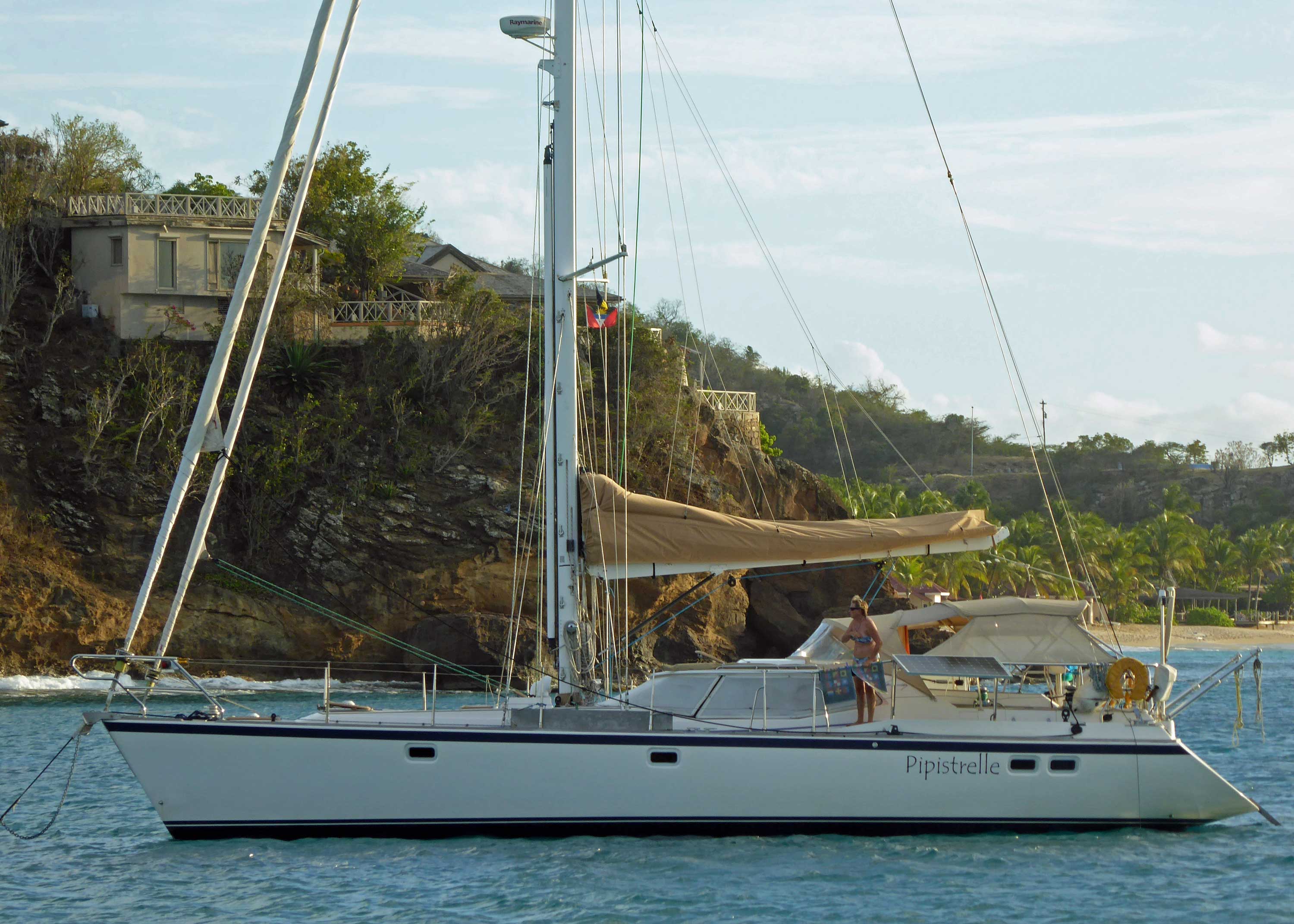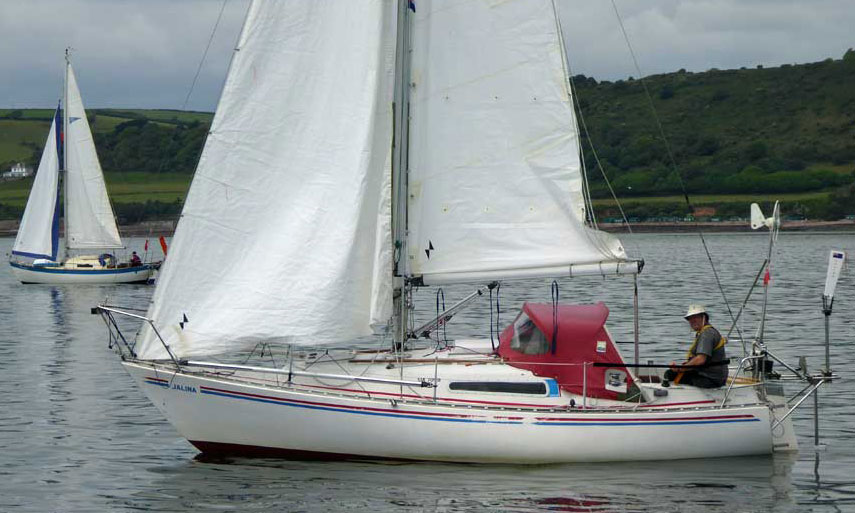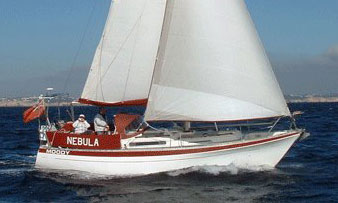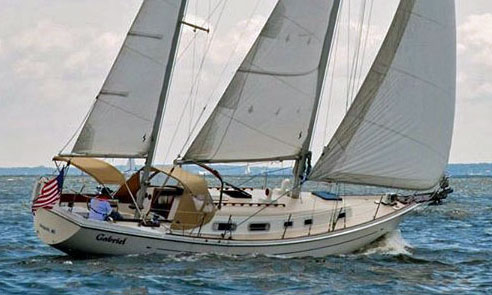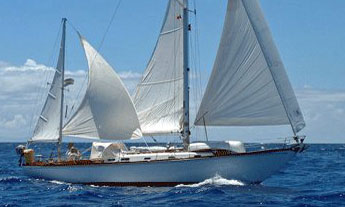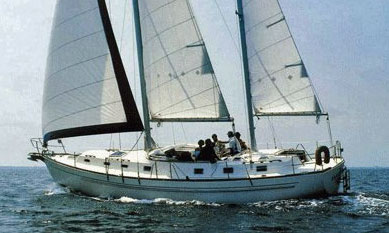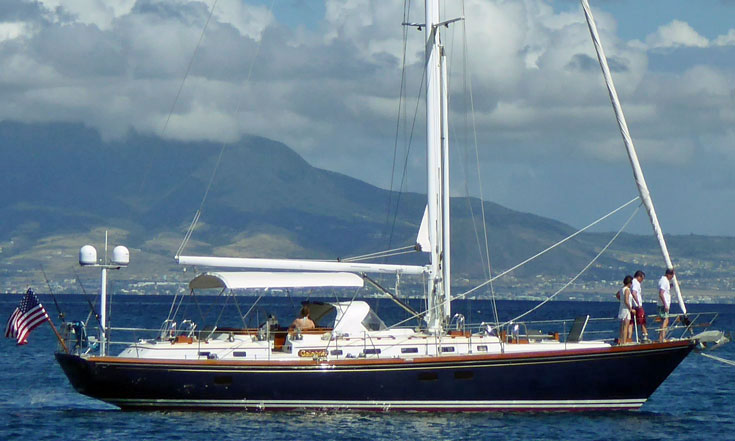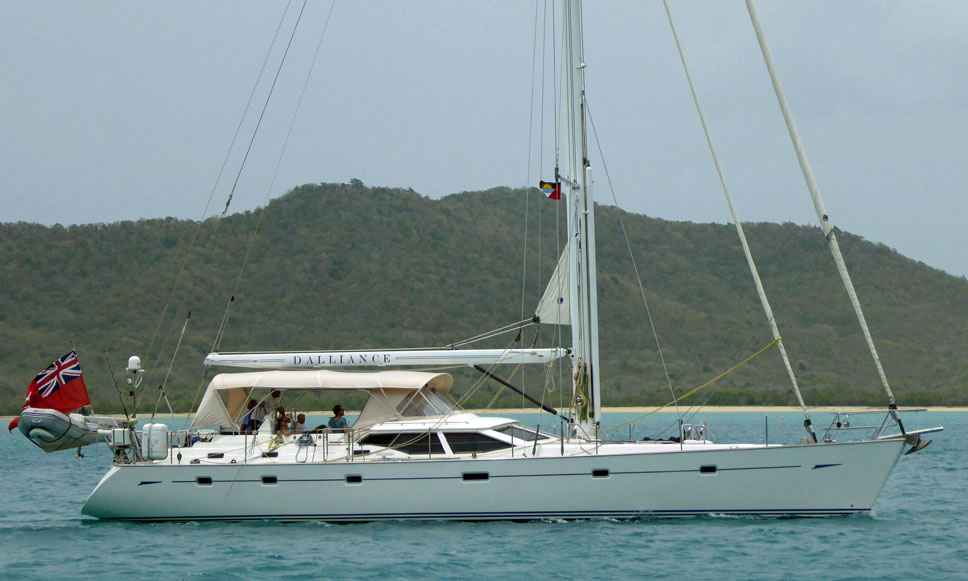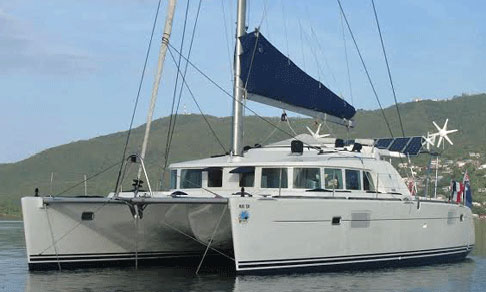- Home
- Types of Sailboats
- Sailing Sloop
Sailing Sloop Rigs for Cruising: Are They the Best for You?
In a Nutshell...
A sailing sloop, with its single mast & two-sail configuration (mainsail & headsail), is a simple & cost-effective rig widely considered a great choice for cruising, particularly for boats under 45 feet.
Table of Contents
While more complex rigs like cutters or ketches offer enhanced flexibility for heavy weather, modern advancements in furling systems & sail materials have made sloops more manageable for short-handed cruising. The two main variants are the masthead sloop, prized for its simplicity, & the fractional rig, which offers more precise control over sail shape for performance sailing. The ideal rig for your cruising depends on your boat's size, your sailing style, & your budget.
Is a Sailing Sloop Rig the Best for Cruising?
I’ve had my fair share of time on the water, both racing and cruising and, for me, there’s nothing quite like the feeling of a well-balanced sloop beating to windward. But is the simplicity and performance of a sailing sloop rig the right choice for your cruising adventures? For many, the answer is a resounding "yes."
While racing sailors often favour a high-aspect ratio rig for ultimate windward performance, the needs of a cruiser are different. We need a rig that is manageable, reliable, & versatile across a wide range of conditions, especially when sailing short-handed. This is where a moderate-aspect ratio sloop truly shines, balancing windward ability with ease of handling on all points of sail.
What are the Primary Sloop Rig Variants?
The single mast & dual-sail setup of a sloop is straightforward, but it comes in two primary configurations that are crucial for any potential owner to understand:
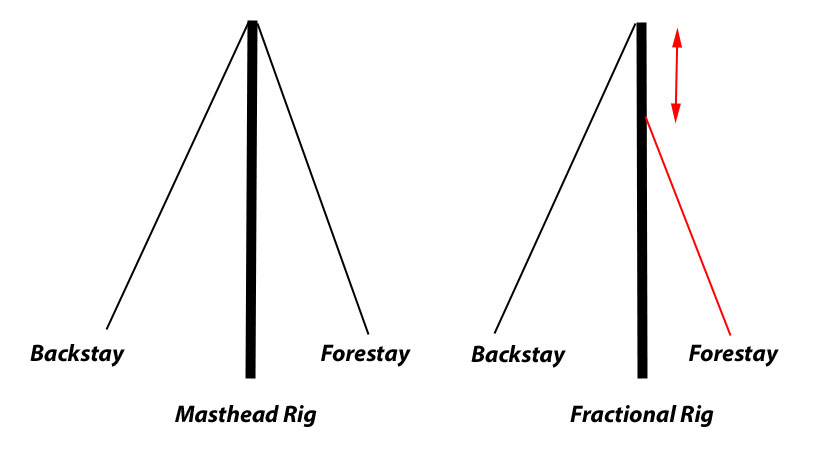
Masthead Rigs & Their Unique Characteristics
This is the simpler of the two designs, with the forestay attached at the very top (the masthead) of the mast. The headsail is the primary engine of the masthead sloop, and its size can vary dramatically. On 'Jalingo II' my old Nicholson 32, for example, I used everything from a small working jib to a large 130% genoa, each suited for different wind conditions, before I saw the light and installed a furling genoa.
A point of clarification: a headsail is called a jib if its clew doesn't extend aft of the mast. If it does, it's a genoa. Knowing this distinction is key to talking to sailmakers!
Modern masthead sloops have often adopted roller furling for the headsail, which greatly simplifies sail handling, especially for a single-handed sailor. However, a major disadvantage is the inefficient shape of a partially furled headsail, which impacts performance, particularly when sailing to windward.
Fractional Rigs & How They Provide More Control
With a fractional rig, the forestay is attached below the top of the mast—typically at 7/8ths or 3/4ths of the way up. This design shifts more of the sail area to the mainsail, which has several benefits:
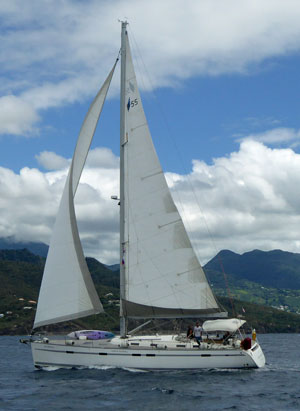 A fractionally-rigged Bavaria 55
A fractionally-rigged Bavaria 55- Easier Reefing: The most powerful sail is the mainsail, which is typically reefed first in rising winds. Reefing a mainsail is generally quicker & easier than wrestling with a headsail on the foredeck, especially with slab-reefing systems.
- Performance Tuning: The unsupported top of the mast can be bent forward by tensioning the backstay, which flattens the mainsail. This is a powerful technique for depowering the sail to reduce heeling and maintain drive in stronger gusts.
- Downwind Performance: The larger main provides more drive downwind, & the smaller jib is less likely to be blanketed.
The main downside to a fractional rig is the complexity of managing running backstays, which are often required to keep the mast properly in column. A small error during a tack or jibe could have serious consequences. I've seen more than one sailor get caught out by this, so good practice is essential.
How Does a Spinnaker Fit into a Fractional Rig Setup?
When it comes to downwind performance, the spinnaker is king. However, many cruising sailors are intimidated by its size and the perceived difficulty of handling it, particularly with a large masthead rig. The fractional rig offers a compelling solution to this challenge.
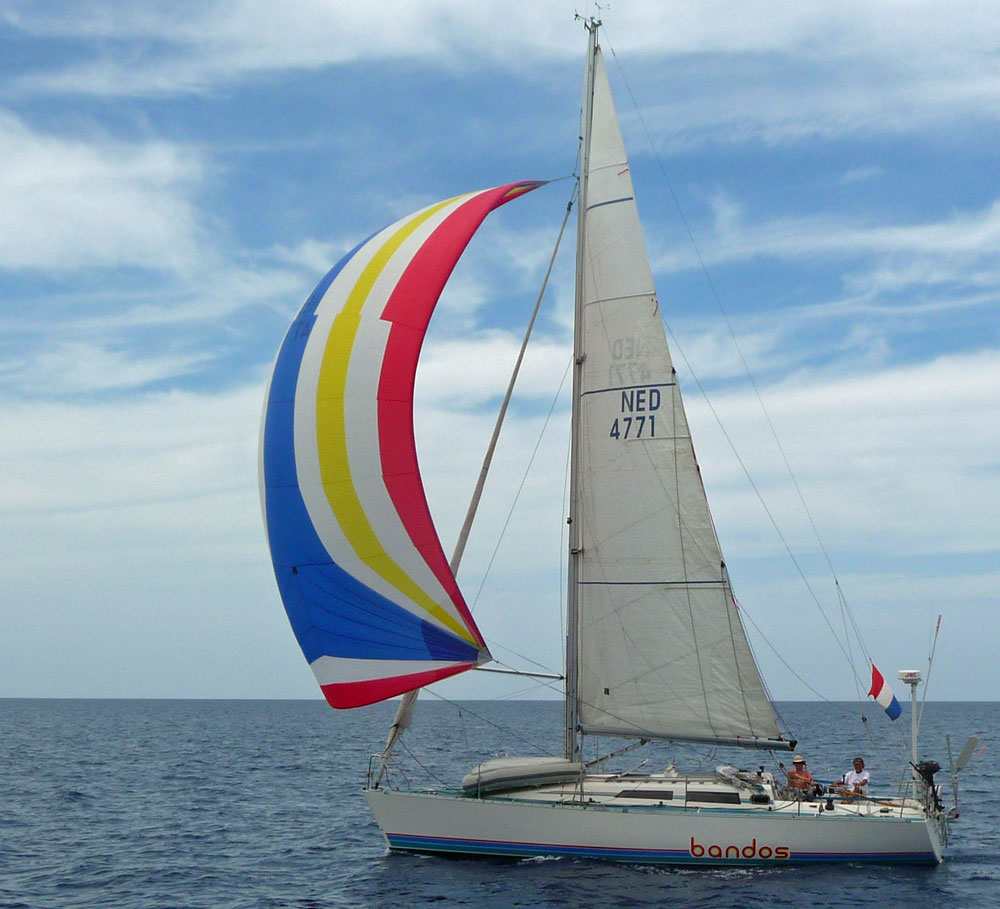 The spinnaker on a fractional rig is smaller and more easily managed than the masthead version.
The spinnaker on a fractional rig is smaller and more easily managed than the masthead version.A fractional rig's design, with its lower forestay attachment point, means the spinnaker is hoisted from a position lower on the mast. This makes the sail smaller and significantly more manageable for a short-handed or cruising crew. From my own experience sailing both masthead and fractional rigs offshore, the difference in the physical effort required to hoist, trim, and recover a fractional spinnaker is substantial. This makes sailing downwind a far more enjoyable and less stressful experience, particularly when the wind starts to build.
Advantages of a Fractional Spinnaker
The smaller size of the spinnaker on a fractional rig provides several key benefits:
- Easier Handling: The reduced sail area and lower centre of effort make the sail less powerful and easier to control, which is a major advantage for novice sailors or those sailing without a full crew.
- Reduced Load: The loads on the mast, rigging, and deck hardware are lower, reducing wear and tear over time.
- Optimal Performance: A fractional rig is designed with a larger mainsail to compensate for the smaller headsail. The smaller spinnaker is therefore less likely to be blanketed by the large main, leading to a more efficient and balanced downwind sail plan.
While a fractional spinnaker might not be as large or powerful as its masthead counterpart, its ease of use and the balanced nature of the rig make it a highly practical and effective option for cruising. It allows you to take full advantage of downwind sailing without the stress and physical exertion associated with a massive sail on a larger rig.
How Do Sloops Compare to Other Cruising Rigs?
While the sloop is a fantastic option, it's essential to consider its pros & cons against other popular cruising rigs.
| Feature | Sloop Rig | Cutter Rig | Ketch Rig |
|---|---|---|---|
| Mast & Sail Count | One mast; two sails (main & headsail). | One mast; two headsails (jib & staysail) & one mainsail. | Two masts (main & mizzen); three sails. |
| Sail Handling | Simple & easy for small to moderate-sized boats. Sails are larger, making them difficult to manage in heavy weather on larger boats. | Sail area is divided, making sails smaller and easier to handle, especially for short-handed crews. | Sail area is divided into smaller, more manageable sails, ideal for long-distance cruising & older sailors. |
| Windward Performance | Generally the fastest to windward. | Good windward performance, especially with the slot created by the staysail. | Less efficient to windward than a sloop; shines on a reach. |
| Heavy Weather | Can be challenging on larger boats, as roller-reefing a large genoa is inefficient. | Excellent due to the ability to fly a small, inboard staysail & a reefed main. | Very good, as sail area can be reduced easily with multiple smaller sails. |
| Cost & Maintenance | Least expensive to build, rig, & maintain due to fewer parts. | More expensive than a sloop due to an extra headsail, stay, & running rigging. | Most expensive due to the extra mast, boom, sails, & rigging. |
But for the full picture on the various types of sailboats, you might want to take a look at The Ultimate Guide to Sailboats & Rigs.
This article was written by Dick McClary, RYA Yachtmaster and author of the RYA publications 'Offshore Sailing' and 'Fishing Afloat', member of The Yachting Journalists Association (YJA), and erstwhile member of the Ocean Cruising Club (OCC).
Frequently Asked Questions (FAQs)
What is the difference between a sloop and a cutter?
What is the difference between a sloop and a cutter?
A sloop has one mast and a single headsail, while a cutter has one mast but two headsails: a jib and a staysail. Cutters are often preferred for offshore cruising due to easier sail handling in heavy weather.
Are sloops good for single-handed sailing?
Are sloops good for single-handed sailing?
Yes, a sloop is an excellent choice for single-handed sailing. Modern sloops with roller furling headsails and in-mast or in-boom furling mainsails are particularly easy to manage from the cockpit.
How does a sloop perform in different wind conditions?
How does a sloop perform in different wind conditions?
Sloops excel at sailing to windward, especially with a high-aspect ratio rig. While they can lose efficiency off the wind, a moderate cruising rig with a spinnaker or Code 0 sail can provide excellent all-around performance.
What is a double-headed masthead rig (Solent Rig)?
What is a double-headed masthead rig (Solent Rig)?
The double-headed masthead, or Solent Rig, is a type of sloop that has two headstays. Unlike a cutter, only one headsail is used at a time, making it a versatile option that allows you to quickly switch between a large genoa for light air and a smaller jib for stronger winds.
Sources Used
Recent Articles
-
Planning Your Sailboat Liveaboard Lifestyle: An Ocean Sailor's Guide
Dec 06, 25 05:18 AM
Seasoned sailors share their methodical risk analysis for planning a secure Sailboat Liveaboard Lifestyle, covering financial, property, and relationship risks. -
Marine Cabin Heaters: The Expert’s Guide to Comfort & Safety at Sea
Dec 05, 25 06:52 AM
Choose the best Marine Cabin Heaters for your vessel. Expert advice on diesel, paraffin, and hot water systems for year-round cruising comfort. -
Marine Water Heating Systems: Free Hot Water from Your Boat's Engine
Dec 03, 25 05:06 PM
Tap into your engine's heat to get free hot water on board. An experienced ocean sailor's guide to marine water heating systems, calorifiers & safety.

